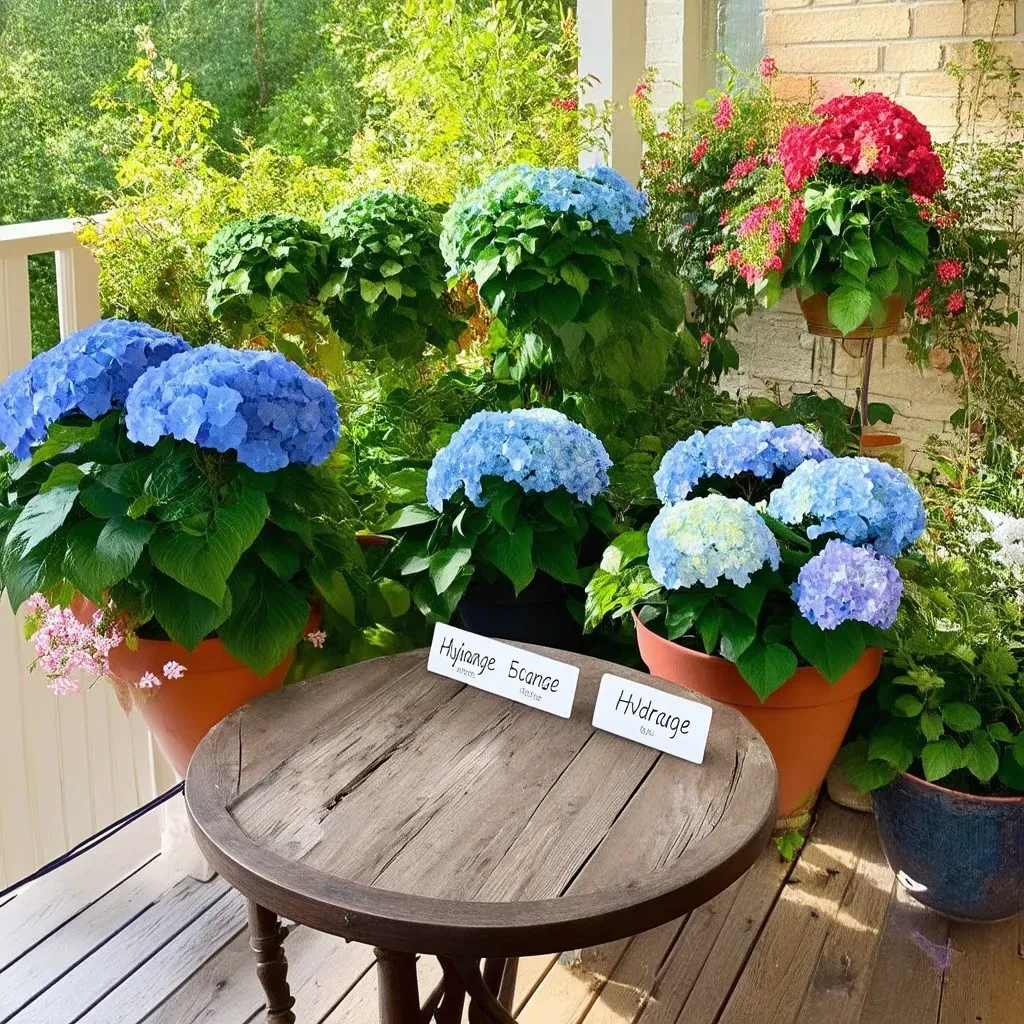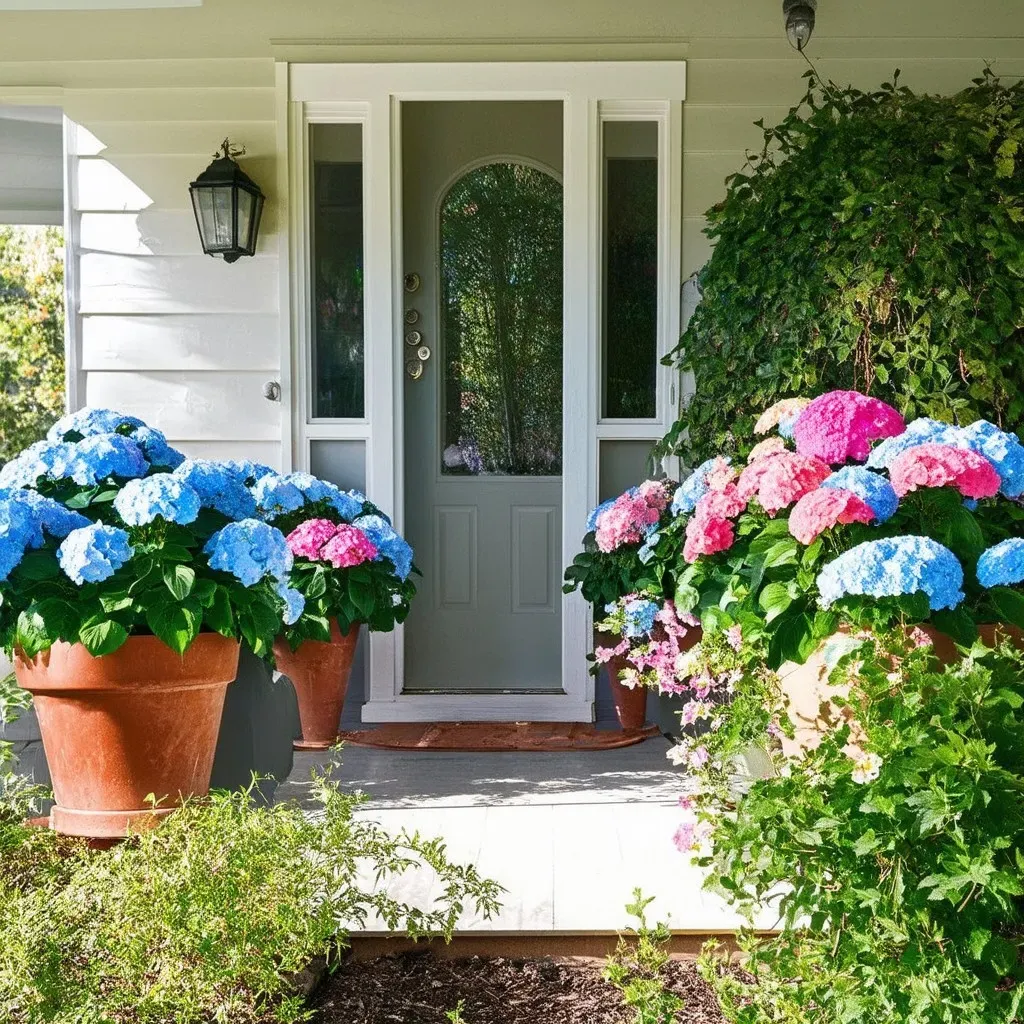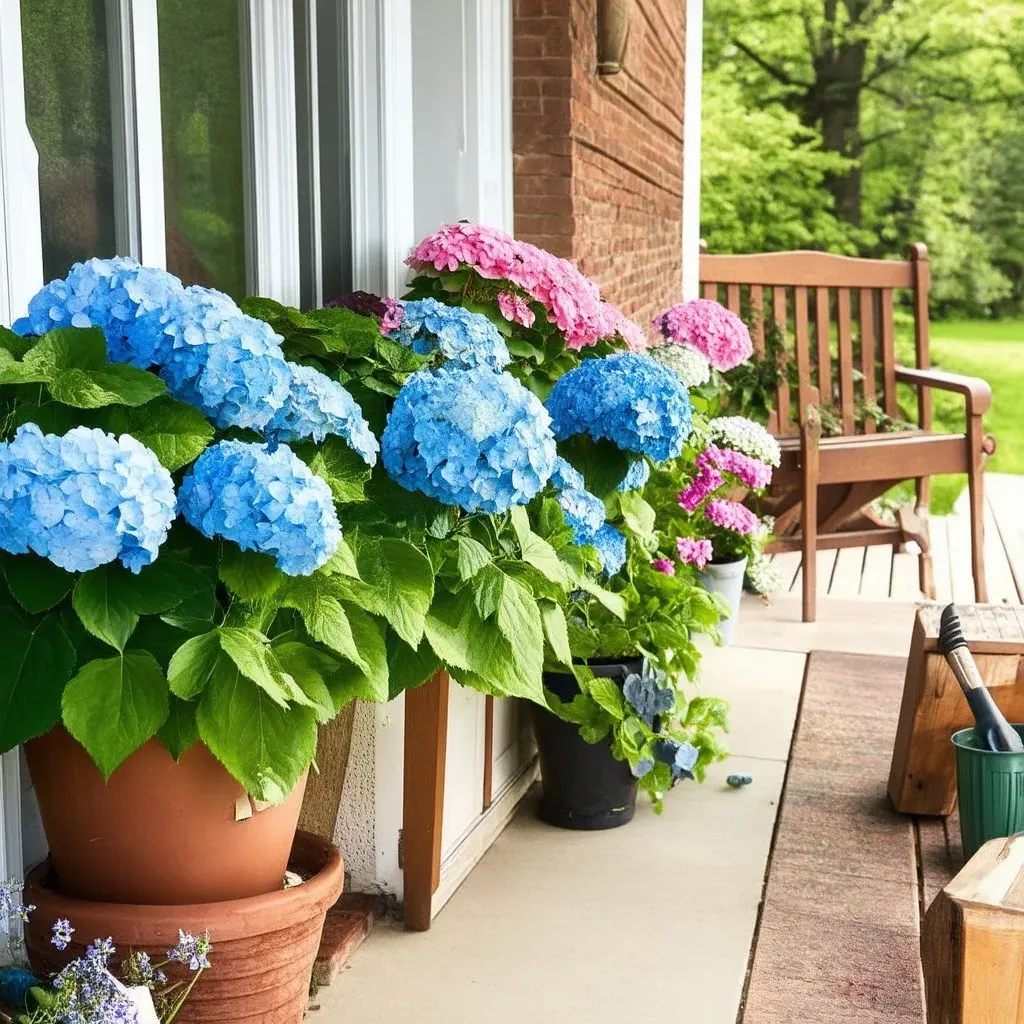Front porch potted hydrangeas are the perfect way to bring spring and summer vibes to your home. These stunning flowering plants offer vibrant colors, rich textures, and a welcoming aura that can elevate any entrance. Many homeowners are turning to hydrangeas in pots as a way to bring effortless beauty to their front porches. Not only do they provide a visual feast, but they also contribute to the ambiance of your home’s exterior.
The Basics of Potted Hydrangeas
Hydrangeas thrive in a variety of climates and come in different species, each boasting unique flowers and growth habits. To cultivate healthy hydrangeas in pots and ensure they flourish, consider the following essential care tips:
-
Choosing the Right Container: Opt for a pot that is at least 24 inches wide and has adequate drainage holes for excess water. This allows the plant to grow its extensive root system while preventing the roots from sitting in water.
-
Quality Potting Mix: Use high-quality potting soil combined with compost to provide essential nutrients. A mix containing slow-release fertilizer can help your hydrangeas thrive during their initial growth.
-
Sunlight and Location: Place your potted hydrangeas in a location that receives a minimum of 4-6 hours of sunlight daily. While most hydrangeas enjoy full sun, some varieties may prefer afternoon shade, especially in warmer regions.
-
Watering Schedule: Hydrangeas prefer evenly moist soil. Water them thoroughly but avoid waterlogging. A good practice is to check the top inch of soil; if it feels dry, it’s time to water.
Table: Popular Hydrangea Varieties for Container Planting
| Variety | Flower Color | Bloom Time | Height | Hardiness Zones |
|---|---|---|---|---|
| hydrangea macrophylla | Pink/Blue | Late spring | 3-6 feet | 5-9 |
| Hydrangea paniculata | White/Pink | Summer | 3-6 feet | 3-9 |
| Hydrangea serrata | Lavender | Summer | 3-4 feet | 5-9 |
| Hydrangea arborescens | White | Summer | 3-5 feet | 3-9 |

Hydrangea Color Changes
One of the unique characteristics of hydrangeas is their ability to change color based on the soil’s pH levels. The color can range from pink to blue, depending on the acidity:
- Alkaline Soil (pH 7 or above): Produces pink flowers
- Acidic Soil (pH 6 or below): Produces blue flowers
To modify the color of your potted hydrangeas, simply adjust the soil pH using garden lime for pinks or aluminum sulfate for blues.
Additional Care Tips
-
Fertilization: Feed your potted hydrangeas with a balanced fertilizer every 6-8 weeks during the growing season to promote blooming and growth.
-
Mulching: Applying organic mulch around the base of the plant serves multiple purposes: it keeps the roots cool, provides essential nutrients as it decomposes, and retains moisture.
-
Pruning: Depending on the variety, some hydrangeas benefit from pruning after they bloom. This encourages bushier growth and more abundant flowers for the following season.
-
Winter Care: For colder climates, protect your potted hydrangeas by insulating the pot with burlap or wrapping it in foam. Alternatively, you can move the plants to a sheltered spot.
Creative Planting Ideas for Your Porch
Window Boxes and Decorative Arrangements
Potted hydrangeas are not just for your front porch; they make excellent additions to window boxes, allowing you to enjoy their beauty from indoors. Consider using a mix of hydrangeas and complementary annuals, like petunias or begonias, to provide continuous color throughout the seasons.
Seasonal Pairings
- Spring: Combine hydrangeas with daffodils and tulips for a fresh spring look.
- Summer: Mix with lilies or coneflowers for a vivid summer presentation.
- Fall: Pair with ornamental grasses and fall foliage for a cozy autumn ambiance.

FAQs about Front Porch Potted Hydrangeas
Q1: Can I grow hydrangeas in pots all year round?
Absolutely! Potted hydrangeas can thrive year-round if provided proper care. Ensure they receive adequate sunlight and water, and protect them in winter months as necessary.
Q2: How often should I repot my potted hydrangeas?
Typically, potted hydrangeas should be repotted every 2-3 years to refresh the soil and ensure their root system has ample space to grow.
Q3: Do hydrangeas need a lot of water?
Yes, hydrangeas prefer consistently moist soil but be cautious of overwatering. It’s vital to achieve a balance to ensure their health.
Q4: What can I do if my hydrangeas aren’t blooming?
Possible reasons include insufficient sunlight or improper fertilization. Ensure they are placed in the right lighting conditions and follow a fertilization schedule to encourage blooming.
Final Thoughts: The Aesthetic Benefits of Hydrangeas
With their lush blooms and vibrant colors, front porch potted hydrangeas are not just plants but pieces of art that can transform any exterior space. Whether lined along a pathway or nestled in a window box, these elegant plants beckon astonishment and admiration. Gardening enthusiasts and novices alike can benefit from the unparalleled charm that potted hydrangeas bring, turning even the simplest of entrances into a breathtaking showcase of nature’s wonders.
To learn more about Hydrangea Care, visit Proven Winners for detailed guidance: How to Grow Hydrangeas in Pots.

Adding potted hydrangeas to your front porch not only enhances its beauty but also creates a welcoming atmosphere for guests, enriching the character of your residence and bringing joy throughout the gardening seasons.


